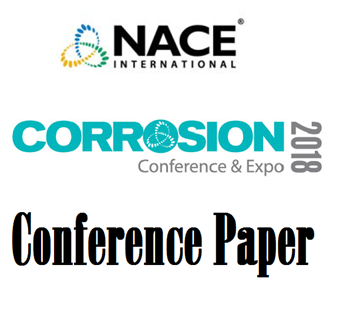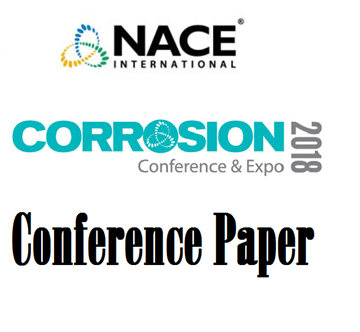Exploration production and transportation of oil are face serious corrosion problems mainly due to the presence of gases such as CO2. The CO2 corrosion is a complex process and a large number of variables are involved in the CO2 corrosion such as pH temperature fugacity and system total pressure.This work deals with CO2 corrosion mechanism using electrochemical and gravimetric techniques. The experimental setup was free of oxygen and the pH was kept constant during the measurements time. For the CO2 saturated conditions continuous gas purge was adopted and for the tests without CO2 the solution was constantly renewed. In all conditions the pH was constantly measured in order to guaranty the pH value within the measurement time. The Electrochemical impedance spectroscopy was used to investigate the CO2 corrosion on X65 carbon steel. Tests without chloride were carried out to evaluate CO2 corrosion effects. Once high resistivity solutions induce a phase shift in the diagram high frequency range a two-electrode cell was adapted in an autoclave to obtain correct impedance. It was used two parallel plates with 80 cm2 each with distance between plates of 2 and 3mm in order to verify the linear relationship between solution resistance and plates distance.The CO2 saturate system showed impedance diagrams with one time constant at intermediate frequencies and an inductive loop at low frequencies similar results were obtained to tests carried without CO2 and using HCl to reach pH4. The similarity of impedance diagrams in the absence of CO2 are in agreement with literature results1 and evidence that anions are not able to introduce parallel reaction direct on iron.At pH4 the charge transfer resistance RCT obtained from impedance diagrams without CO2 were much higher than in systems saturated with CO2. These results confirm the well accepted concept of CO2 buffering effect where acts as proton reservoir234. The weight loss tests agree with the impedance data showing higher corrosion rates to CO2 systems.Experiments carried out in solution with very high concentration of chloride: 115000ppm with and without CO2 also confirms the buffering effect presenting resistances much lower in the presence of CO2. Again the weight loss results corroborate qualitatively with impedance diagrams. The referred impedance diagrams suggest the same corrosion mechanism and give strong evidence the only cathodic reaction is the proton reduction and the main role of CO2 a kind of pH reservoir.These studies are going to be extended to higher pHs and total pressures (including supercritical conditions) and also comparing the results with tests at the same pH but in the absence of CO2. Preliminary tests indicated lower corrosion rates at higher pressures; however in this work we propose tests with constant pH by renewing the test solution constantly.1- O. E. Barcia and O.R.Mattos Electrochimica Acta Volume 35 Issue 10 p 1601-1608 (1990);2- E. Remita B. Tribollet E. Sutter V. Vivier F. Ropital J. Kittel Corrosion Science 50 Issue 5 p.1433-1440 (2008);3- B.R. Linter G.T. Burstein Corrosion Science 41 p.117-139 (1999);4- S. Nesic and W. Sun “Corrosion in Acid Gas Solutions”. In: Richardson J. A. et al.(eds) Sheir´s Corrosion 2 p. 1270-1298 Amsterdam: Elsevier (2010).




